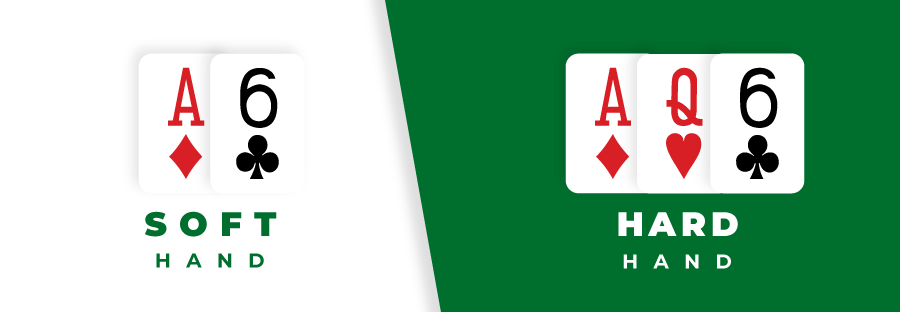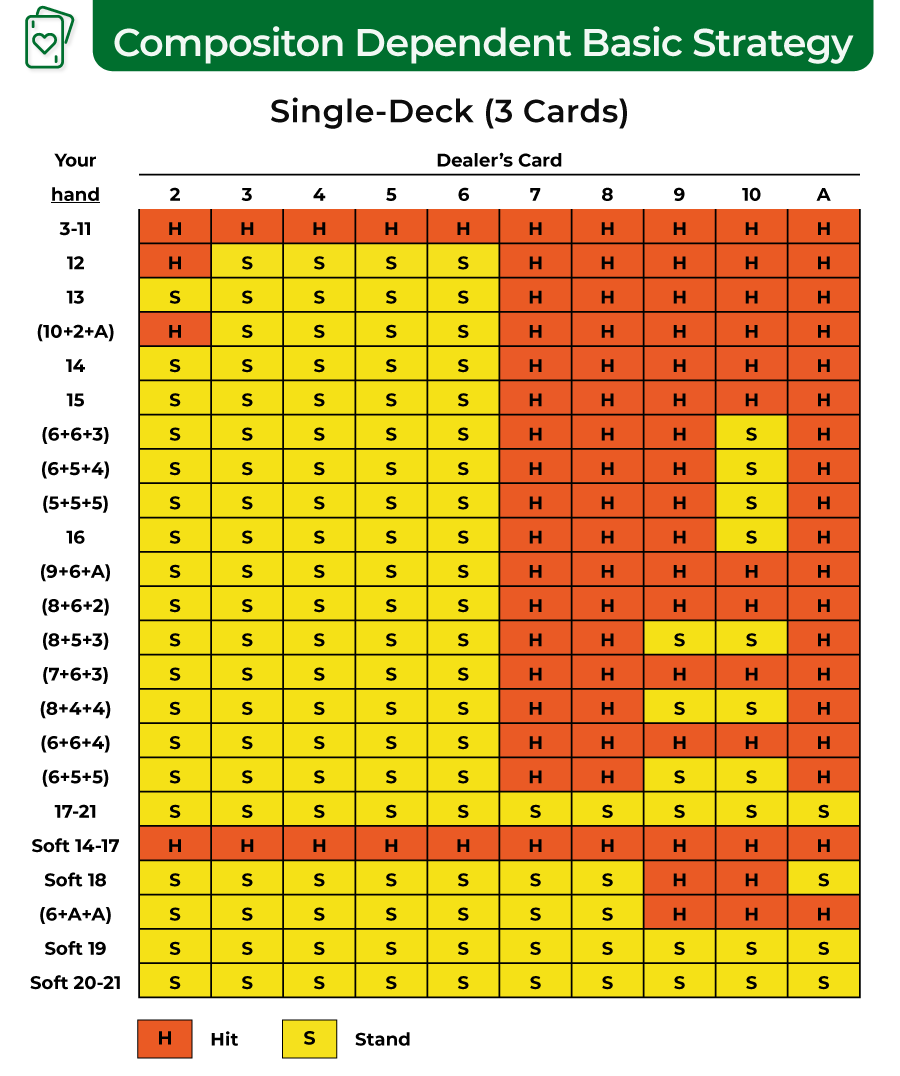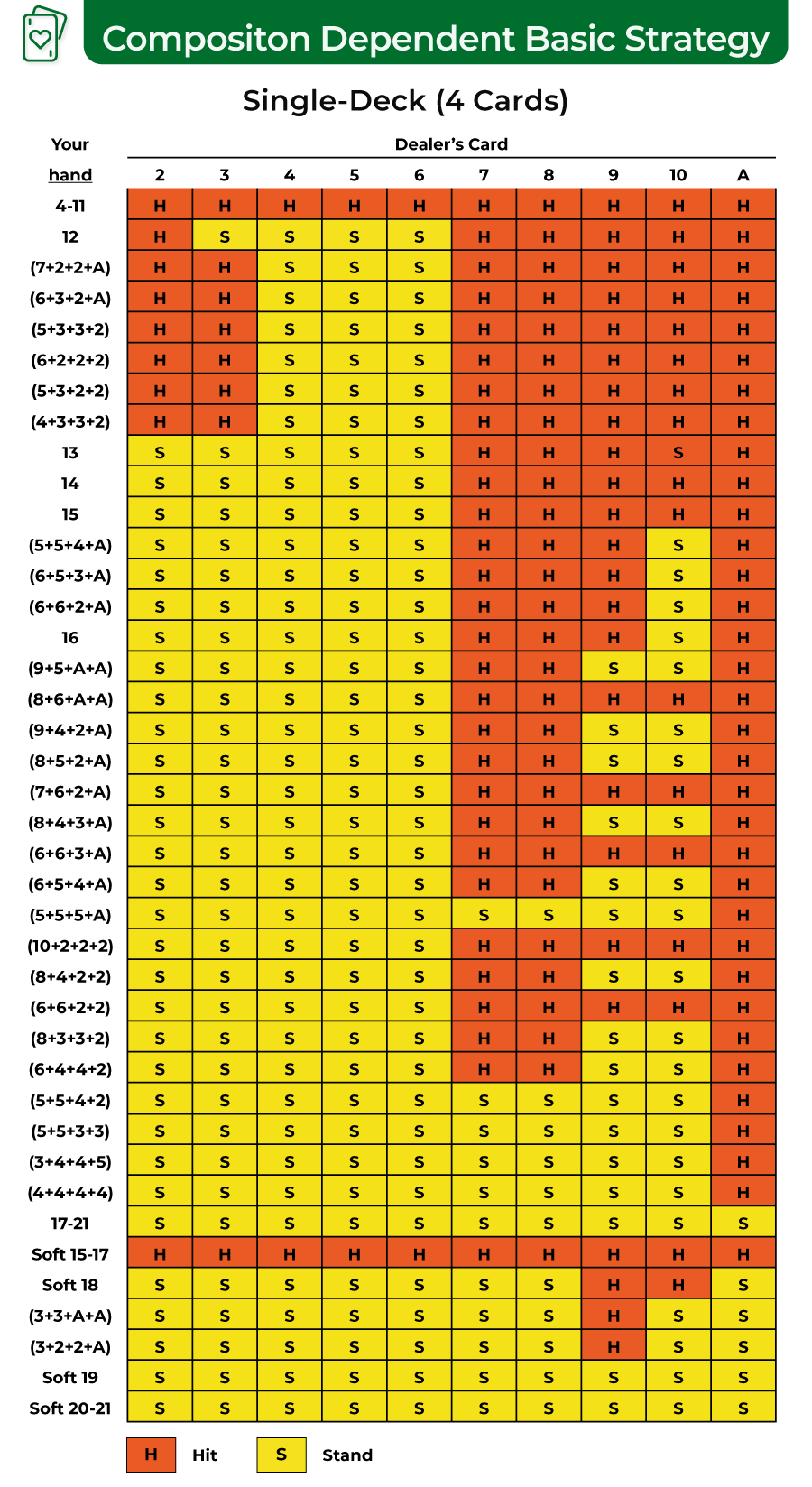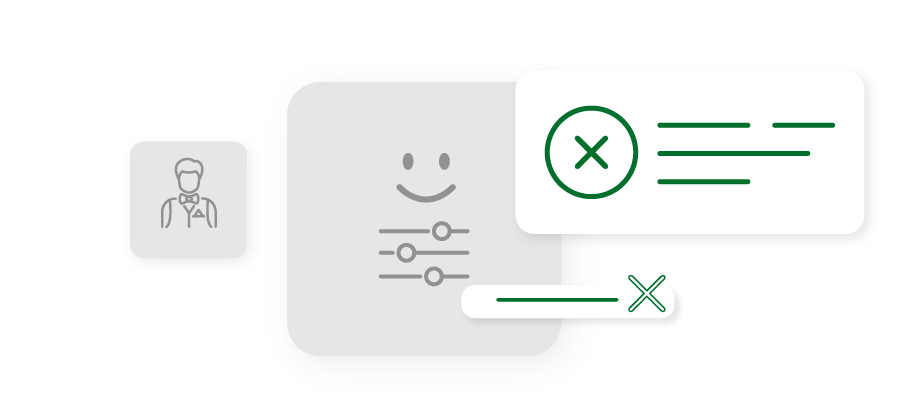Knowing when to hit in blacklack is the most important decision you will come across when playing the game.
In theory, this is easy to understand, and for the most part, it is. Peter Nairn is here to explain the ins and outs of this simple yet crucial decision at the blackjack table.
Here’s what you’ll learn:
Let’s get started!
Author’s note
The beginning part of this article will cover those simple decisions.
But there are times when it’s not so simple, and I have written the remainder of this article for those times when there are options that need to be thought through before making the decision.
So, when does the dealer have to hit in blackjack?
Each casino (both online and land-based) has to make this decision a part of their rules, and we’ll talk about the implications of that rule, too.
To hit is to tell the dealer that you want her to give you another card, and to receive that card.
To stand is to decide that your hand is good as it is, and that you don’t want any more cards.
Hand Signals in Land-based Casinos

In an online casino, the player clicks on the ‘hit’ or ‘stand’ button which tells the computer your decision.
In a land-based casino, the player must give the dealer a hand signal to inform her of what he wants to do.
Why do they use a hand signal?
Two reasons:
- In a land-based casino there can be quite a lot of ambient noise, and so the visual signal removes the possibility of the dealer misunderstanding your intentions.
- Surveillance cameras over every table record your hand signal (and everything else, by the way), and if the dealer makes a mistake, the video can be reviewed to correct the mistake.
Soft vs. Hard Hands in Blackjack

In blackjack, an Ace can count a 1 or 11.
A soft hand always has an Ace in it, and that Ace counts as 11.
You can hit your Soft hand and not risk going over 21.
A hard hand may have an Ace in it, and if it does, the Ace counts as 1.
So a Soft 17 (sometimes written as S17) is an Ace and a 6 and can be hit without the possibility of busting.
A Hard 17 (sometimes written as H17) is (for example) an Ace, a 6 and a Queen (with the Ace counting as 1), and the hand can bust if hit with a 5 or anything higher.
The casino has a set of rules that the dealer must follow.
The dealer cannot make any decisions, she must follow the house rules.
One of the most important casino rules for you as a player to know and understand is whether the dealer hits or stands on a Soft 17.
This rule is important because if the dealer hits a Soft 17 vs. stands on a Soft 17, it increases the House Advantage (HA) against you by 0.22%.
In a game that has a typical HA of less than 1%, that’s a big swing towards the casino.
Generally speaking, there are three main versions of blackjack in play at land-based and online casinos.
They are the 6-deck shoe, the double deck and the single deck.
The 6-deck shoe is the most common format in land-based casinos, and the simplified method of playing the 6-deck shoe is:
- Hit until you have hard 17 or more if the dealer’s up card is a 7 through Ace.
- Stand once you have a hard 12 or more if the dealer has a 2 through 6.
There are a couple of variations to these simplified rules that are listed in the Basic Strategy chart below.
Casinos set up their rules to make them attractive to players while still maintaining the casino’s ability to be profitable.
For example
A single deck game with some standard rules including the dealer standing on a Soft 17, double on 9 - 11 only, no surrender and a 3 to 2 payout for a blackjack has a typical HA of 0.143%.
A good card counter would be able to take that HA down even further to where he may even have the advantage over the casino.
Obviously, that is not something the casino would like and in order to prevent this from happening, the casino changes the blackjack payout to 6 to 5.
This changes the HA in the casino’s favor by 1.39%. A massive change that is simply too difficult for the player to overcome.
If you change the blackjack payout to 6 to 5, that tiny 0.143% HA becomes 1.538%.
More than 10 times greater!
And no card counter is going to attempt to overcome that large a House Advantage.
It used to be that everyone talked up the single deck game as the game to play. It’s the best game if you’re a serious player and so on.
This is true if the game pays 3 to 2 for a blackjack.
What the casual player failed to understand is that it isn’t true when blackjack pays 6 to 5.
In fact, a single deck that pays 6 to 5 for a blackjack is one of the worst versions of blackjack to play.
So now the casino has the public relations plus of offering a single deck game, but in fact doesn’t offer any of the benefits of the single deck game.
It’s not that unusual to see land-based casinos now offering a 6 to 5 payout for a blackjack on a double deck game.
(I’m looking at you, Cache Creek near Sacramento!)
Just adding the second deck changes the HA from 0.143% to 0.411%. Almost triple.
Changing the blackjack payout to 6 to 5 changes the HA on the game to 1.78%, which is almost like price gouging and yet players still play it.
Basic Strategy is a series of rules that have been formulated over decades by mathematicians and blackjack experts. By running billions of hands in computer simulations, they have come up with the best way to play every possible combination of cards that can be seen.
Below is the Basic Strategy chart for a 6-deck shoe where the dealer hits a Soft 17 and blackjack pays 3 to 2.
By changing the number of decks in play from one to six and not changing anything else, the HA on the game changes from 0.143% to 0.575%.
This is because there are many more cards available and it becomes easier to make some hands that may be more difficult to make with fewer cards.
So the number of decks in play has a significant effect on the HA on the game.
You can also review this Basic Strategy chart for when to hit or stand in blackjack when you have a Soft hand, and when to Split a pair.
This chart also gives you detailed information on when to Double Down and when to Surrender.
For a complete detailed description of the more advanced strategies of when to hit and stand in blackjack, please review my basic strategy guide that specifically address these questions.
Please note: This Basic Strategy Chart is for a 6-deck shoe and the dealer hits a Soft 17
| Hard Totals |
| Dealer Upcard |
| | 2 | 3 | 4 | 5 | 6 | 7 | 8 | 9 | 10 | A |
| 17 | S | S | S | S | S | S | S | S | S | SrS |
| 16 | S | S | S | S | S | H | H | SrH | SrH | SrH |
| 15 | S | S | S | S | S | H | H | H | SrH | SrH |
| 14 | S | S | S | S | S | H | H | H | H | H |
| 13 | S | S | S | S | S | H | H | H | H | H |
| 12 | H | H | S | S | S | H | H | H | H | H |
| 11 | D | D | D | D | D | D | D | D | D | D |
| 10 | D | D | D | D | D | D | D | D | H | H |
| 9 | H | D | D | D | D | H | H | H | H | H |
| 8 | H | H | H | H | H | H | H | H | H | H |
| KEY | H = Hit |
| S = Stand |
| D = Double if allowed, otherwise Hit |
| SrH = Surrender if allowed, otherwise Hit |
| SrS = Surrender if allowed, otherwise Stand |
| Soft Totals |
| Dealer Upcard |
| | 2 | 3 | 4 | 5 | 6 | 7 | 8 | 9 | 10 | A |
| A,9 | S | S | S | S | S | S | S | S | S | S |
| A,8 | S | S | S | S | Ds | S | S | S | S | S |
| A,7 | Ds | Ds | Ds | Ds | Ds | S | S | H | H | H |
| A,6 | H | D | D | D | D | H | H | H | H | H |
| A,5 | H | H | D | D | D | H | H | H | H | H |
| A,4 | H | H | D | D | D | H | H | H | H | H |
| A,3 | H | H | H | D | D | H | H | H | H | H |
| A,2 | H | H | H | D | D | H | H | H | H | H |
| KEY | H = Hit |
| S = Stand |
| D = Double if allowed, otherwise hit |
| Ds = Double if allowed, otherwise stand |
| Pair Splitting |
| Dealer Upcard |
| | 2 | 3 | 4 | 5 | 6 | 7 | 8 | 9 | 10 | A |
| A,A | P | P | P | P | P | P | P | P | P | P |
| T,T | S | S | S | S | S | S | S | S | S | S |
| 9,9 | P | P | P | P | P | S | P | P | S | S |
| 8,8 | P | P | P | P | P | P | P | P | P | SrP |
| 7,7 | P | P | P | P | P | P | H | H | H | H |
| 6,6 | PH | P | P | P | P | H | H | H | H | H |
| 5,5 | D | D | D | D | D | D | D | D | H | H |
| 4,4 | H | H | H | PH | PH | H | H | H | H | H |
| 3,3 | PH | PH | P | P | P | P | H | H | H | H |
| 2,2 | PH | PH | P | P | P | P | H | H | H | H |
| KEY | H = Hit |
| S = Stand |
| D = Double if allowed, otherwise Hit |
| P = Split |
| PH = Split if double after Split is Allowed, otherwise Hit |
| SrP = Surrender if allowed, otherwise Split |
Download the Blackjack Strategy Chart
Most Basic Strategy charts are ‘Total Dependent’ charts.
Here is a Total Dependent Basic Strategy chart for a single deck and the dealer stands on a Soft 17:

That means that you only consider the total of the hand, not the individual cards that make up that total.
Composition Dependent Basic Strategy takes into consideration not only the total of the cards in your hand, but the makeup of the cards too.
And the fewer decks being used, the more Composition Dependent becomes useful.
Why is that the case? If you’re playing single deck and the dealer has a 4 as their up card, it means there are only three 4-value cards left in the deck.
This changes the number of ways certain hands can be made, and that can change the ‘hit or stand’ decision.
Here is a Composition Dependent Basic Strategy chart for a single deck where the dealer stands on a Soft 17:

As you can see, it breaks down the specific cards in your hand. It is for a 2-card hand.
For example
Total Dependent Basic Strategy says you should stand with a 12 against a dealer’s up card of 4 when playing single deck, so if your hand is made up of a 7 and a 5 vs. a dealer’s 4, you should Stand.
Composition Dependent Basic Strategy says that you should Hit if your 12 vs. the dealer’s 4 is made up of a 10-value card and a 2.
The next chart is a Composition Dependent chart for the same rules but based on you having a 3-card hand:

The following Basic Strategy chart shows you that if you have a hand of 15 with a Queen and a 5, you should Hit against a dealer’s up card of 10, but if your hand is made up of 4 cards, including a combination of 2, 3, 5 or 6 and an Ace, you should Stand:

But if your 15 is made up of:
- 5 + 5 + 4 + Ace, or
- 6 + 5 + 3 + Ace, or
- 6 + 6 + 2 + Ace
You should Stand.
The following 2 charts apply for the same rules, but in the situation in which you get 5 cards or 6 cards per hand:

And for the 6 cards scenario (which is rare, but can occur):


Here are the most common mistakes that you can do when you hit in blackjack:
Mimicking the dealer's rules
Some players believe that mimicking the dealer and playing exactly the same as the dealer does is a viable and potentially winning strategy in blackjack.
It’s not. Here’s why:
You have to play your hand first, and you can bust and lose your bet before the dealer has to do anything. And even if the dealer busts, you have still lost your bet.
The second part of it is that some of the advantages of being the player are your ability to Split, Double Down and Surrender, none of which you can do if you’re mimicking the dealer.
Here’s the facts:
If you mimic the dealer with liberal Strip rules, it increases the House Advantage against you from usually less than 1%, to 5.48%. Which is a huge House Advantage to overcome.
Emotional Decisions vs. Strategic Decisions
Some players have ice cold emotions, and never seem to be bothered by anything that happens on the game.
Missed my big hand double down? No problem.
Dealer draws a five-card 21 and I have a pair of kings? No problem.
But some players go seriously ‘on tilt’ when something like that happens.
And then they seemingly go to pieces.
Keep in mind
A knowledgeable, experienced player who is ‘on tilt’ may completely abandon Basic Strategy, may lose the count, and may even willfully double down or split a pair that he knows he has no business doubling down or splitting just because he’s so upset by the cards, the dealer or the overall way his day is going.
And you simply cannot afford to do that.
Always stay focused and continue to play perfect Basic Strategy.
And this applies equally to a bricks-and-mortar casino as it does to an online casino.
Always be in control and never allow your emotions to dictate how you respond to anything that happens on the game or around you.

The Blackjack House Advantage can have a significant impact on gameplay.
For example, a game with a 1% HA means that for every $100 put into action, the casino will keep $1.
For a game with a 5.26% HA, like double zero roulette, the casino will keep $5.26 - more than 5 times as much.
Let’s say the player runs that original $100 through the game 4 times.
- For the blackjack game at 1%, after the first run through the player will have $99.
- After the second run through, he will have $98.01.
- And after the third, he will have $97.03.
- And after the fourth time, he will have $96.06.
So the player will have lost $3.94.
On the roulette game, the math looks a lot different:
- After the first run through, the player will have $94.74.
- After the second, he will have $89.75.
- And after the third, he will have $85.03.
- And after the fourth, he will have $80.56
So on the roulette game with it’s 5.26% HA, the player will have lost $19.44
A lot more than the $3.94 that the blackjack player lost.
That's why it’s important to know the House Advantage on any game you’re going to play.
Probability theory is at the center of winning blackjack.
The player can determine the odds of winning by dividing the number of winning outcomes by the number of all possible outcomes.
For example,let’s say you’re playing single deck heads up and the dealer has a 9 up.
- You feel certain he has a ten ‘in the hole’.
- You believe you’re looking at a dealer 19.
- You have a 14, a King and a 4.
What are the odds of you making a 20 or 21 to win the hand?
To make your winning hand, you need a 6 or a 7.
There are 4 of each of them remaining in the deck, so 8 cards total. There are 52 cards in the deck, minus the three cards you have seen.
So you divide the possible winning cards (8 - the winning outcomes), by the total cards remaining to be seen (49 - the total outcomes).
8/49 = 0.1633. So the chances of you winning the hand is 16.33%.
Final Thoughts
So now you have the in-depth detail on when to hit in blackjack and when to stand.
This is the deep end of the blackjack pool, and it may be more complicated than you need to contemplate.
It’s true that the ‘Composition Dependent’ vs. ‘Total Dependent’ information is arcane and not simple to use but it may give you an additional 0.03% against the casino’s House Advantage.
And that’s always a good thing.
We have a lot of detailed information in the Academy that you may find useful in your search to be the best blackjack player you can be.
Hopefully Lady Luck will have her head on your shoulder the next time you play blackjack.

Bonuses
Casinos
Games
Academy
News
Shop
NEW Q&A
Sweepstakes






























